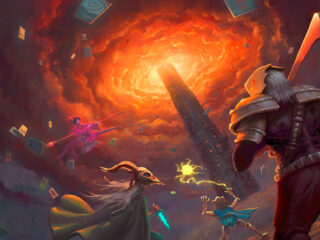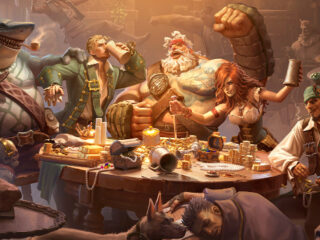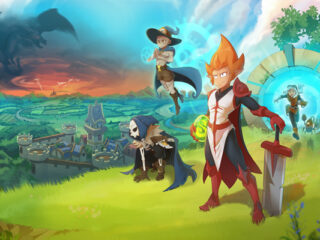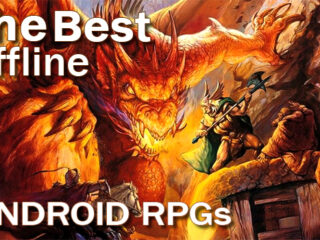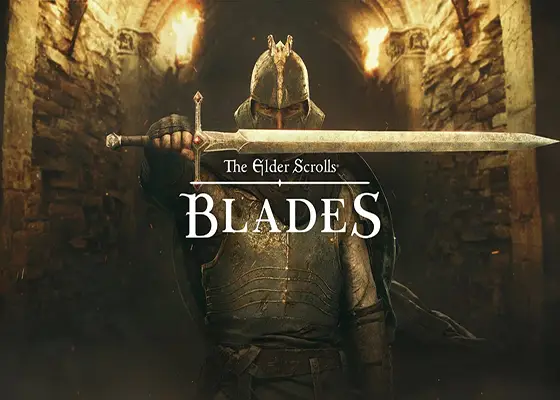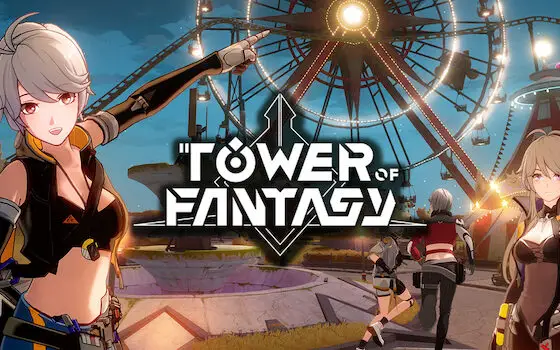 A video game based on a rock-band. Huh. Not something I’d ever played before (turns out it’s not as uncommon as you might have thought), but I was a still a little skeptical. Games based on existing franchises haunt my dreams. In my experience, they tend to amount to unsubtle marketing tools used to milk extra cash out of gullible fans, usually in the form of either a) an unoriginal reskin of an existing game, or b) a “trivia game”. Apparently, all you need for a good (read: marketable) game is to cobble together a few proprietary characters and drop them into a familiar environment, with no though of plot development or game mechanics (A few excellent exceptions, of course, do exist).
A video game based on a rock-band. Huh. Not something I’d ever played before (turns out it’s not as uncommon as you might have thought), but I was a still a little skeptical. Games based on existing franchises haunt my dreams. In my experience, they tend to amount to unsubtle marketing tools used to milk extra cash out of gullible fans, usually in the form of either a) an unoriginal reskin of an existing game, or b) a “trivia game”. Apparently, all you need for a good (read: marketable) game is to cobble together a few proprietary characters and drop them into a familiar environment, with no though of plot development or game mechanics (A few excellent exceptions, of course, do exist).
Nevertheless, the Action-RPG Hail to the King: Deathbat, themed around heavy metal band Avenged Sevenfold, aroused my curiosity from the simple fact that it was getting such good reviews. When I sat down to write this article, 1440 of the 1700 ratings on Google Play gave it a full 5 stars. For a mobile game, especially one with a pricey $4.99 tag, that’s pretty impressive. So despite my misgivings, I decided to give the game a whirl.
Apparently, Deathbat is inspired by the “mythical origin of the Deathbat, Avenged Sevenfold’s logo and mascot”. I know zilch about heavy metal, hadn’t even heard of the band before playing this game, and so cannot attest to the veracity of that statement. However, mascot or not, the game’s storyline is pretty nifty. The world of Haides (yes, that’s pretty groan-worthy, but what can you expect from a game titled Deathbat?) was basically created as a bet among three gods, to see whether good or evil would prevail if people had free will. Yep, that’s right: Haides is one giant, Golding-esque exploration of the Doctrine of Original Sin. Most games would stop there and then let the player lead the world into an era of righteous…err…goodness… In Deathbat, however, the forces of evil have already triumphed: the evil god Kerberos (cue: more groans) cheated and replaced Andronikos, the human king representing all that is good and just, with a corrupt, twisted simulacrum. You play as the real king, revived by the good gods to try and drag the world out of the darkness. In the form of a “Deathbat”, of course, complete with webbed bat wings and skeletal visage, because what else do you expect a resurrected champion of good to look like? This is heavy metal, people!
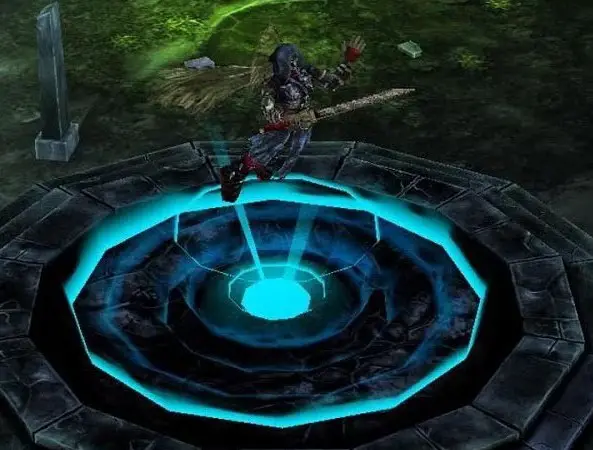
As Andronikos, you have to reassemble the fabled “Talisman” and bring peace to the world. You do this by exploring lengthy levels, killing nefarious demons and avoiding, sidestepping, puzzling through, or for someone like me, blindly stumbling into dastardly traps. As gameplay goes, Deathbat is pretty standard. You get one button for a melee attack, and one for a ranged magical attack (which you can also hold down to release a special crowd control effect determined by your weapon). For normal enemies, you really never progress much beyond rushing at them and swinging your sword. Boss fights are more interesting because they each have quirks. Should you run around and take pot-shots, trying to avoid their vicious claws? Or deal with their summoned underlings first to remove their protective shield?
In terms of aesthetics, the game delivers decently well. While I don’t care much for the somewhat dated 3D rendering of characters and enemies (and the shopkeeper-witch’s piercing cackle really grates on my nerves), the backgrounds and environments are darkly evocative and draw you into the gothic, heavy-metal world. The shadows-on-parchment art style of the opening cut-scene is especially lovely, and the music (particularly important for a game based on a band) is great, a sort of heavy-metal / 8-bit fusion score with a bit more oomph.
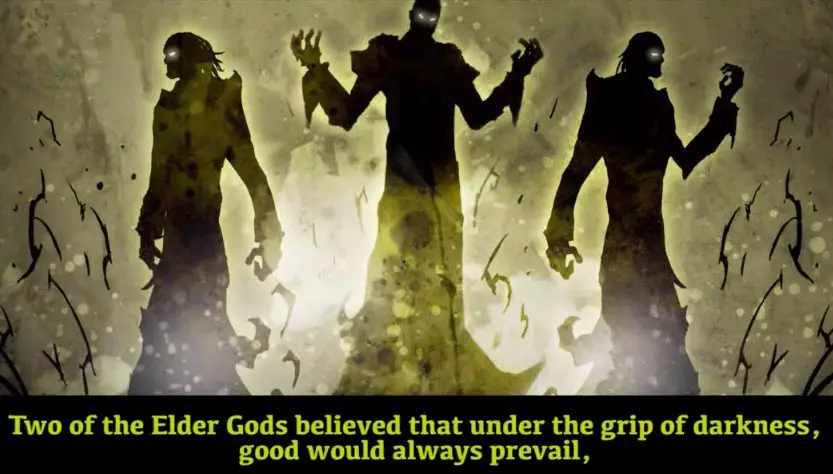
Unfortunately, Deathbat is marred by some frustrating elements. I literally spent fifteen minutes trying to figure out how to move properly (your finger need to tap only on the left side of the screen-nowhere else), and even late into the game, the controls remained choppy. Aiming your ranged attack is a nightmare unto itself, and you’re often better off not even trying.
And you die. A LOT. All the time, in fact. Call me a wuss, but did you have to design a game where dying 5 times in a protracted, hour-long dungeon with multiple checkpoints and hundreds of enemies means restarting the whole dungeon? I don’t care to recall how many tries it took me to finish even the first real stage, but it verged on ridiculous. Health boosts are hard to come by so you have to spend all your coins on potions lest ye be doomed to be trapped in an endless cycle of grinding through the same monsters and repeating the same dungeons over and over again. Which would be fine if you were properly rewarded for grinding: a skill tree that you can advance within even if you keep dying, for example would be great. Or maybe the addition of ARPG’s most cherished tropes: loot. Diablo II, for example, lingered long after its expiry date essentially due to its loot system. Diablo III’s visual augmentation of your avatar as you earn better loot works wonders with keeping you hooked on the game. Deathbat’s paltry coin-rewards and measly shop do not.
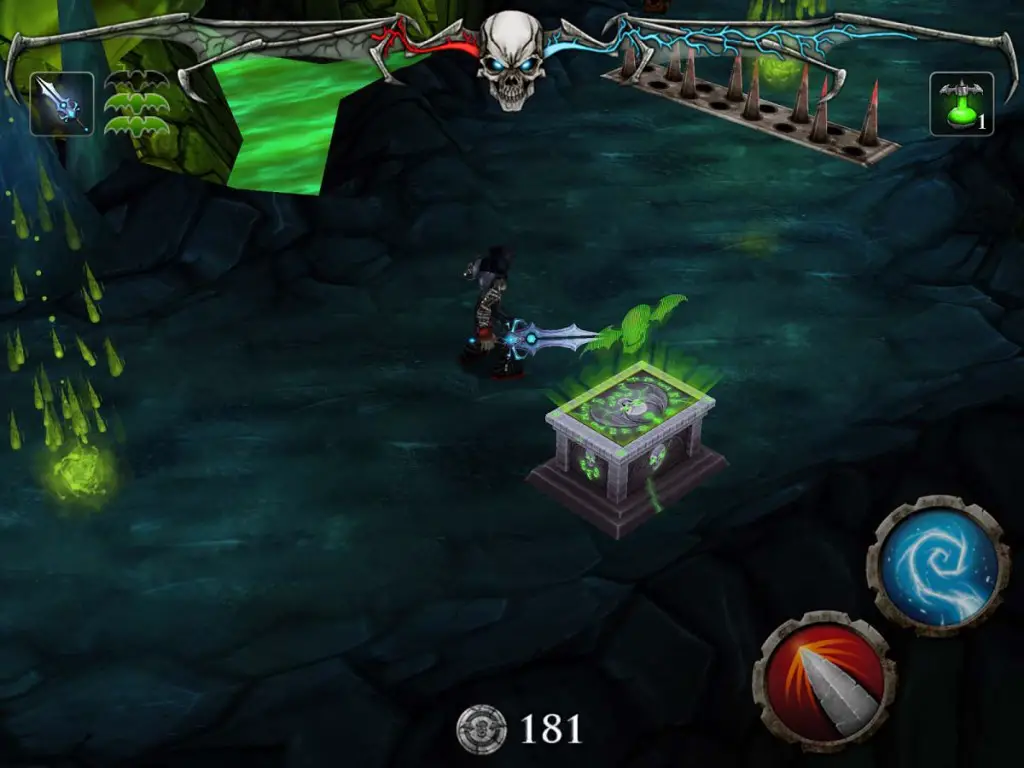
On the whole, Hail to the King: Deathbat is a pretty so-so Action RPG. Interesting story, plenty of content and cool art and music help. But, what could be a solid combat system is hindered by exasperating controls, and the rinse-and-repeat nature of the game gets old fast. There’s a fine line between challenge and frustration when designing a game, and Deathbat clumsily lumbered into the latter’s territory, transforming into an irritating grind-fest. And while many people (at least 1440) may be fans of this style of action, I rarely find that unrewarded, drawn-out grinding sessions lead to engaging gameplay experiences.
Hardcore?
Yeah...
Add a star if you like hack-and-slash grinding. Meh, if you don’t.




